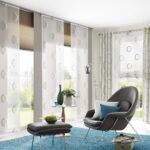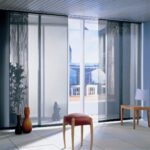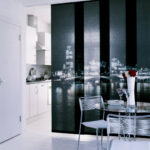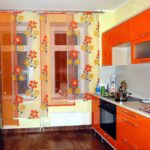Description of Japanese curtains
Japanese-style curtains are unusual textiles that have several names: screen or panel. Visually, they are similar to a huge screen, which at first glance attracts the viewer's attention. Curtains with this design are definitely considered an excellent element in home decoration.
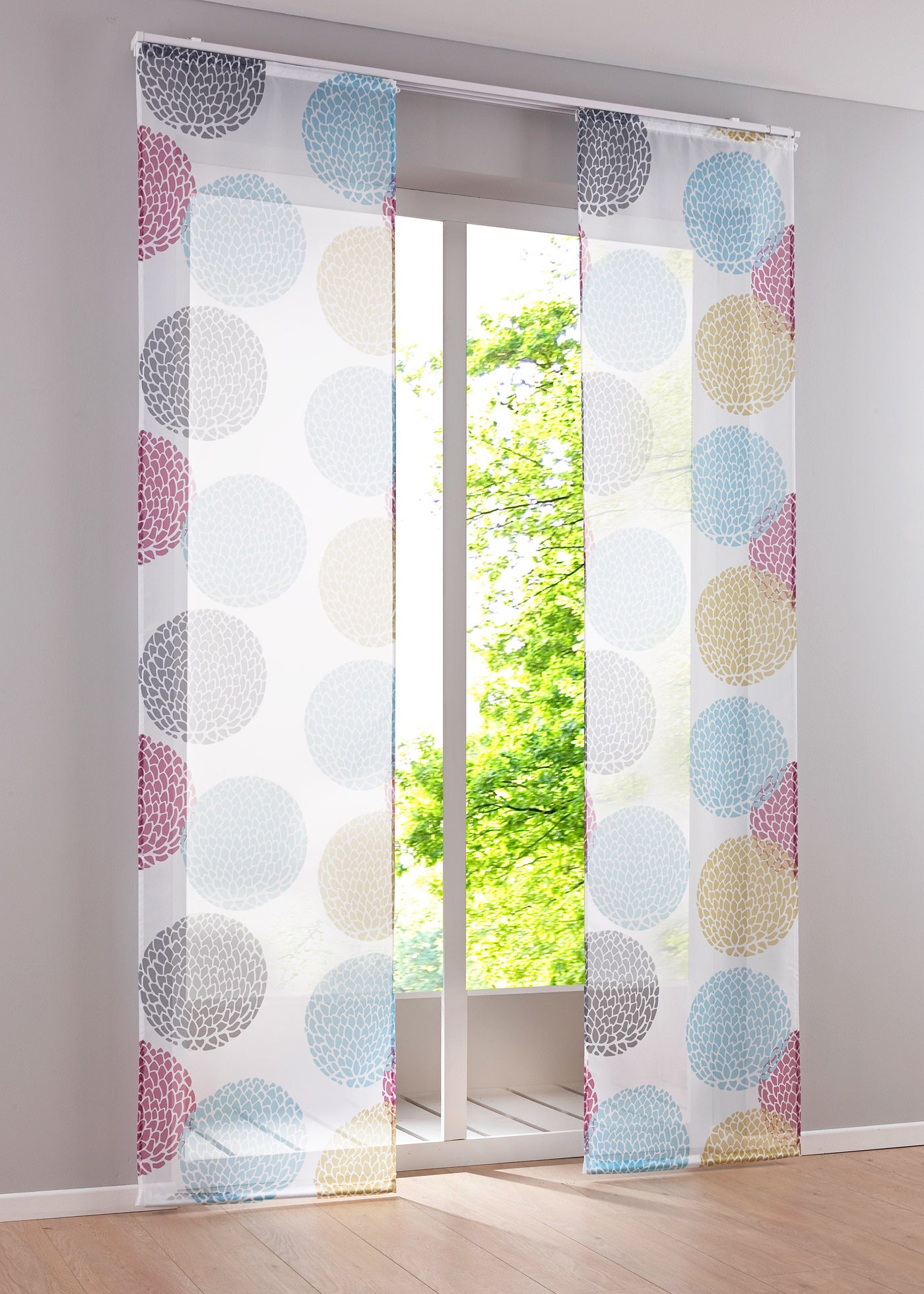
- Advantages and disadvantages of Japanese curtains
- Choosing the type and color of fabric
- Japanese panels
- Japanese drawing
- Interior Japanese curtains
- Japanese style curtains
- Photo of design ideas in the interior
- Japanese curtain design ideas
- How Japanese curtains are attached
- Do-it-yourself cornice for Japanese curtains
- Video: all about Japanese curtains
- Design options for Japanese curtains in the photo
Advantages and disadvantages of Japanese curtains
In recent years, the popularity of Japanese-style curtains has been constantly increasing, they have a number of advantages:
- You do not need to limit your imagination in the choice of colors and textures of the fabric.
- It is easy to care for the products, cleaning will not take much time. Dirt hardly sticks to the panels.
- You don't need a master to hang the curtains. All works are considered simple, any person can handle them.
- Japanese curtains consist of a small amount of materials. To create standard models, many times more fabric would be required, the price of the finished product would be higher.
- The canvases are perfect for use in rooms where the bright sun often shines. The entire living space will be well protected from harsh and blinding rays. The lighting will still be natural, but more diffused and softer.

The only significant drawback of curtains against the background of the merits is a small choice in terms of shapes. There are often two options to consider: square and rectangular.

Choosing the type and color of fabric
To create classic Japanese-style curtains, natural materials are taken, while they are not necessarily fabric. The production uses: thick rice paper, jute, straws or bamboo plates. At first, the curtains were produced in one tone, and did not play the role of decoration, only functionality was important.
In the modern world, there are no restrictions on the choice of materials, everyone can find an option that will fit the unique home interior.
For those who strive for eclecticism, it is better to turn their attention to fabrics with different textures and shades. Make sure that the canvases are well combined with each other.

In order for the shape of the product not to be lost over time, choose fabrics made of linen, silk, satin, cotton, these materials are dense and do not stretch. They can be interestingly combined with translucent moire or chiffon panels.
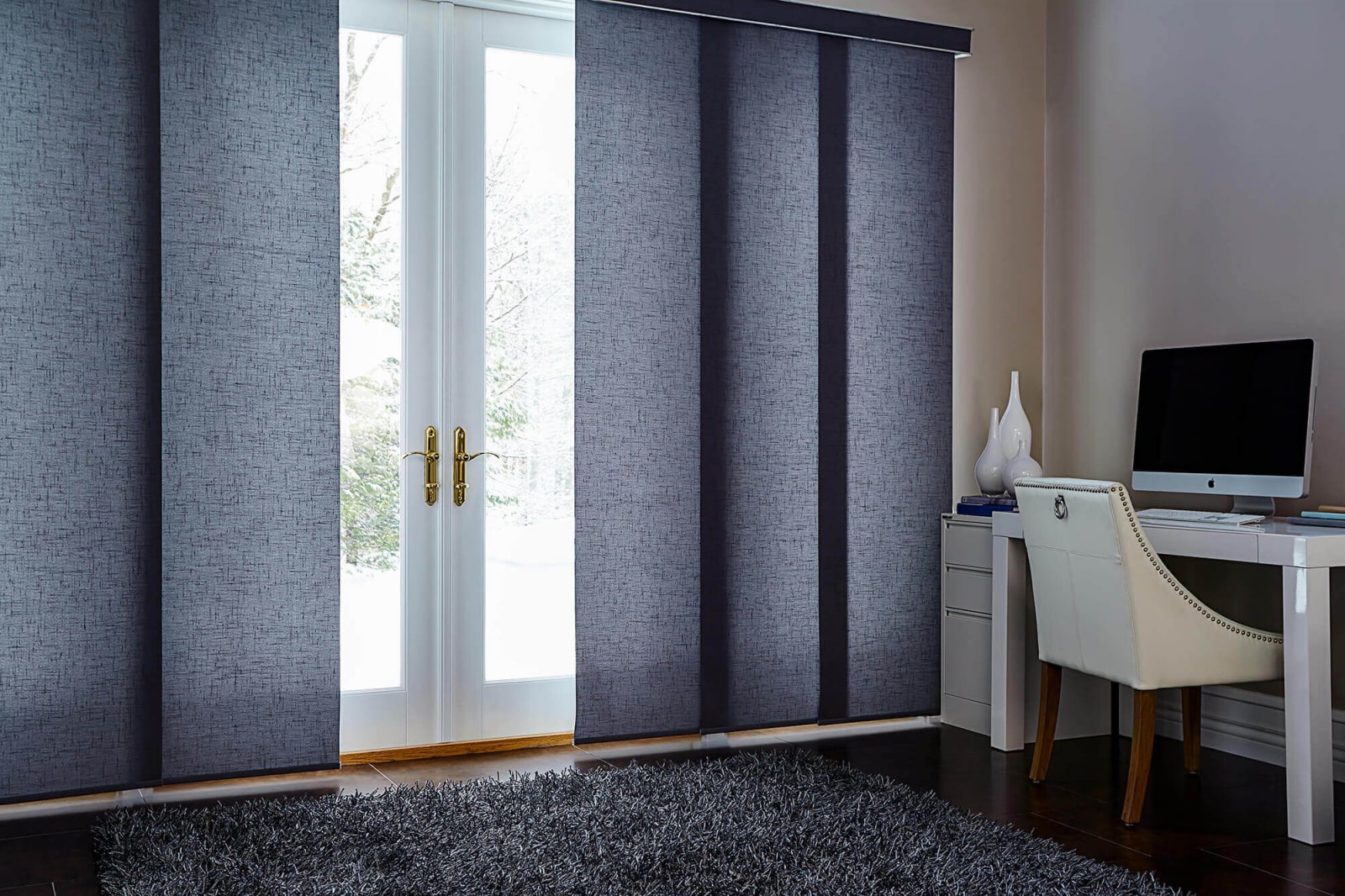
If the interior is made in a minimalist style, then it is better to stay on a single-color canvas with a medium-sized pattern. Curtains with plant motifs are very popular.

Advice. In all other cases, the use of bright colors and catchy prints is allowed.
Japanese panels
The appearance and other characteristics of Japanese curtains are very different from the usual type of window decor. The screen cloths have a special design: in the upper part there is a retaining element, there is also a base and a weighting agent.In the process of using the products, there should be no difficulties. All components are durable and functional.

Japanese panels have interesting features:
- the system of work is associated with blinds, products may have sections, their number is related to the size of the window frame;
- in width, one sectional canvas can be more than 100 centimeters;
- curtains must be controlled using a special chain, lace or remote control;
- the panels move like a screen, this principle is considered modern and convenient.
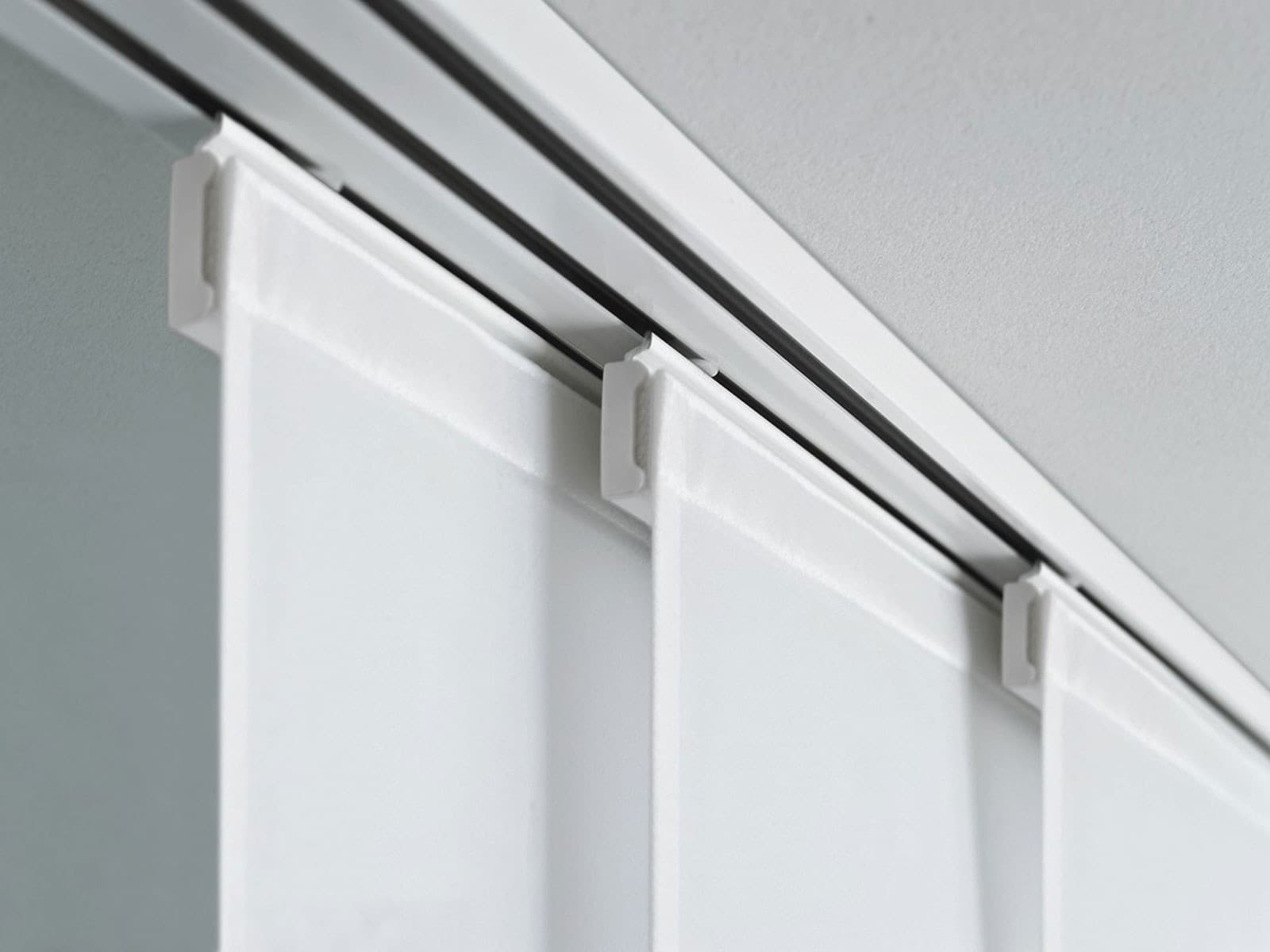
Each piece of Japanese paintings is a unique product that combines beautiful colors and new technologies.
Japanese drawing
Images on Japanese curtains can be varied, most often the drawings reflect the motives of the native state. On the market you can find products with cherry blossoms, hieroglyphs, dragons or Mount Fuji.
Several ornaments look great on the panels at once. The most restrained option would be curtains made in natural colors with geometric patterns. If the interior needs an expressive spot, choose curtains with bright and large patterns.

Panel space is a canvas open to extraordinary ideas, but at the same time it is advisable not to use the popular photo printing on fabric. The image should look natural, as if the work was done by hand. Traditional landscapes applied to the canvas using ink or paints will look as appropriate on the curtains as possible.
Interior Japanese curtains
Doors are an integral part of many premises. Japanese curtains can be used as interior partitions. The design described will be almost the same as for window decoration: panels and cornices. The key difference is that the doors will be made of a denser and more rigid material: cotton, bamboo, reeds.
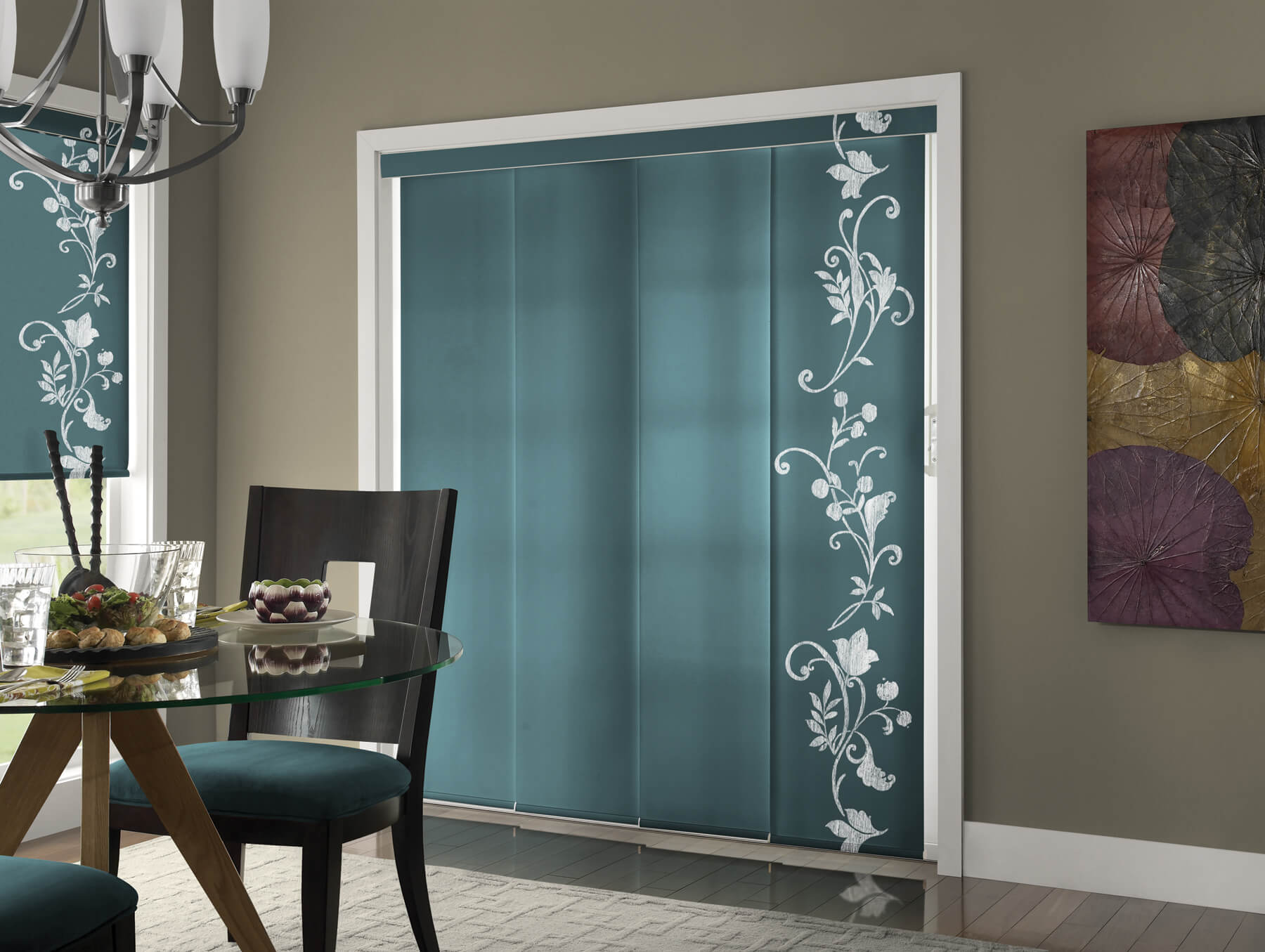
The main advantage of such products is that such panels can be conveniently opened, hiding behind each other, they do not take up much space. Japanese curtains will add lightness and transparency to the interior, well replacing traditional interior models.

Doors usually use several panels, the height of the product can be from floor to ceiling. Eaves are allowed to be fixed at any level, it all depends on the preferences of the home owner.
Japanese style curtains
Japanese curtains are considered to be more comfortable to use than standard textile counterparts. The canvas is tightly stretched over the cornice, there are no folds, so the curtains become less and less dirty. Some materials can be washed, and the structure is formed in such a way that the fabric can be easily removed from the window and then hung in its place.

For your information! Japanese-style curtains will last a long time, they do not require much maintenance. The sun's rays are not harmful to the products.
Photo of design ideas in the interior
If the interior is decorated in a minimalist style, then the ideal option for additional discreet decoration would be Japanese curtains.Photos of numerous examples can be found on the Internet. It is better not to use curtains in a room with pompous decor, where there are many bright elements.
When creating an interior in accordance with the traditions of Japan, follow a simple rule: everything superfluous is a disgrace. The main highlight of the design is the presence of a large empty space, a minimum amount of furniture is allowed. In the rooms, it is appropriate to use large elements in the form of images, paintings and mosaics.
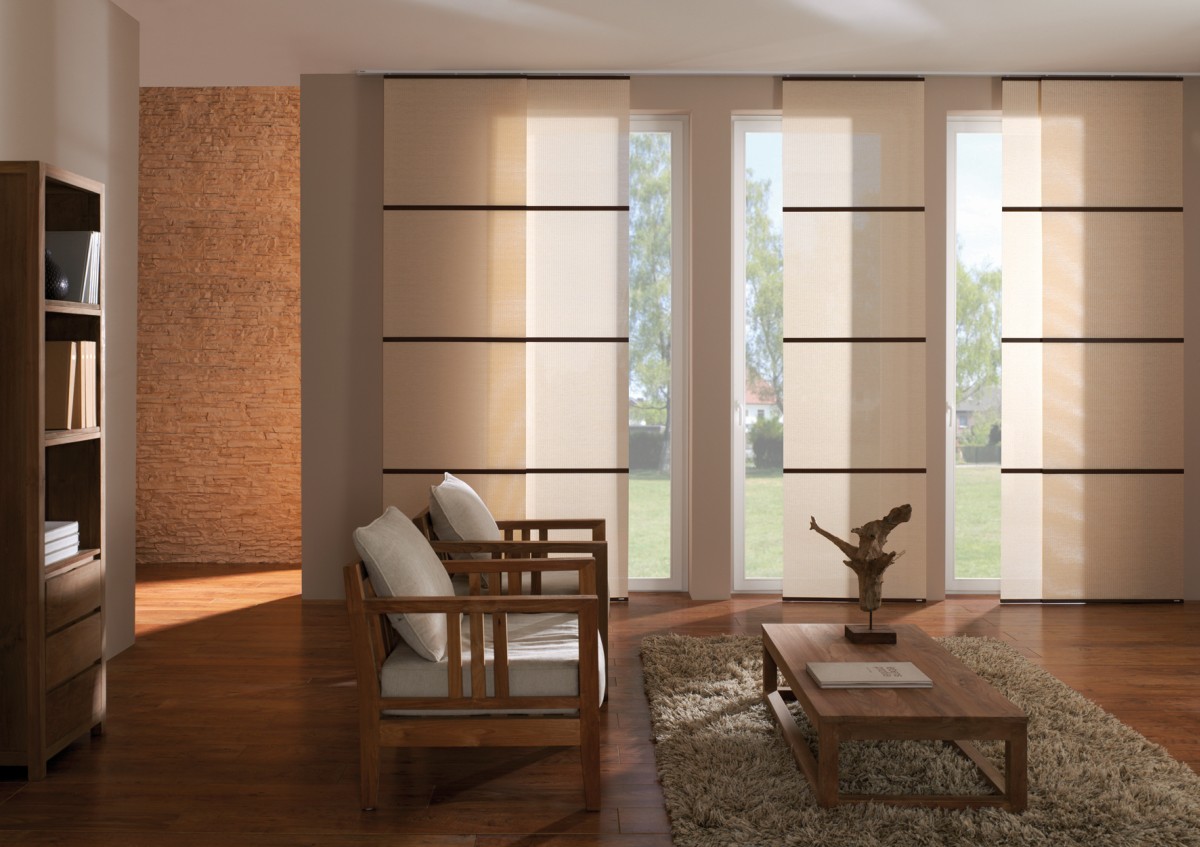
Kitchen
When adding Japanese motives to the kitchen, turn to oriental traditions. A harmonious and concentrated atmosphere should prevail in the room where they are engaged in the preparation and acceptance of food, otherwise the food will not be beneficial. To decorate the kitchen space, it is better to choose curtains with delicate and unobtrusive patterns.

If the general interior style does not contradict the idea, complement the window panels with light, natural shades that will be associated with wildlife: green, light brown.
For greater convenience, it is better to purchase a shortened version of the curtains. These models are much easier to clean. In eco-style, the ideal option would be canvases made of special straw or decorative bamboo sticks.
Living room
Japanese curtains, which is noticeable in many photos on the Internet, fit perfectly into the interior of the living room. Experts advise not to be limited to dark colors, but to try to put on a small experiment, choosing a light and textured curtain to decorate the room.

Panels made of translucent voile add romance to the room and give the design an elegant look. Do not be afraid to use bright and rich colors and unusual textures in the living room. Catchy elements are not a sign of bad taste.

Bedroom
The bedroom is a place to relax, so to create a relaxed mood, it is better to choose calm and pastel colors in the design. Floral or graphic curtains and natural light add warmth to the room.

Do not overload the space with panels; in a sleeping room, it is enough to use two or three pieces. It is advisable to choose a material of medium density, without a lot of ornamentation.
Japanese curtain design ideas
To make the room seem more comfortable, it is recommended to combine several curtains made of lightweight and dense material. Experts advise you to immediately purchase a couple of ready-made options for interior decoration, so that you can quickly change them if you wish.
Unusual decor is perfect for zoning large living rooms, a loft or a small studio apartment.

Choosing the theme and colors of the curtains, be sure to focus on the overall design of the home. Keep in mind that it is better not to mix Japanese style with other styles. He is well able to emphasize the ideas of brevity, the design will look quite original.
How Japanese curtains are attached
Fabric panels can be attached to standard or multi-row cornice. The structure is fixed either on the wall or on the ceiling. For zoning living space, it is recommended to use not only straight, but also curved cornices.
Standard material is aluminum or plastic. The panels are attached to the base with Velcro. This solution makes the curtains easy to use, easy to remove and hang.

Eaves with multiple tracks allow panels to be wound one behind the other, which saves space. Several interior elements can be placed on one row, while the width of the structure will not increase.

Panel curtains can be either manually operated or remote. For the second option, you will need to install a quiet electric motor, which is programmatically connected to the remote control.
Do-it-yourself cornice for Japanese curtains
Japanese curtains are practical and elegant décor based on a cornice. The structure can be mounted over any part of the room, the location does not play a big role.
To create a cornice with your own hands, you will need tools and high-quality materials. Be sure to pay attention to the weight of the finished product. Plastic is considered brittle and cannot cope with large loads; a large number of panels will require steel.

Use a drill and screwdriver to fix the curtain rod in the selected location. Keep curtains away from heating elements and windowsills. Curtains should fall freely.
Place the curtain rod flat on the intended area, mark the attachment points with a pencil. Then drill the holes and fix the product tightly. After completing the work, you should check the reliability of the resulting structure.
Japanese-style curtains can be purchased at any boutique that specializes in home textiles. If you want to get something unique - order the curtains in the workshop, or create them yourself.
Video: all about Japanese curtains

































